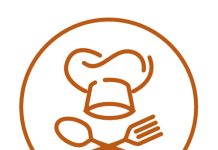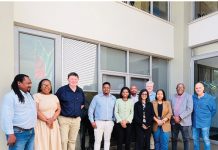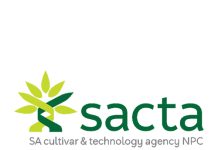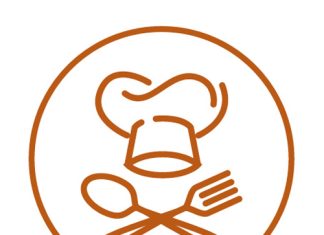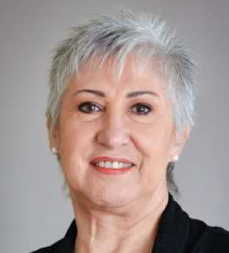
SA Graan/Grain contributor
The Strategic Agricultural Input Forum (SAIF) and its members participated in a joint workshop in April 2022, on the topic of public-private partnerships in search of best practices in the regulatory environment.
As the driving force of interventions and actions in this regulatory space, SAIF chairperson De Wet Boshoff, shared his experience and journey in working directly with the registrar of Act No. 36 of 1947, and moving towards reaching a public-private partnership (PPP) between the SAIF and the Department of Agriculture, Land Reform and Rural Development (DALRRD).
Regulation enables government to achieve its policy objectives. According to the Organisation for Economic Co-operation and Development (OECD), regulatory policy is achieved through the use of regulations, laws and other instruments to deliver better economic and social outcomes. But in South Africa, amid renewed indications of the agricultural sector and government’s shared commitment to the success and growth of agriculture, the sector has been struggling to cope with the regulatory environment. Regulation has impacted the ability of businesses to create innovative products or services to serve their communities and employ people.
Founding of the SAIF
The SAIF aims to address the challenging legislative and regulatory matters affecting its members that are from different industries, but all regulated by the same act. The forum was initially established in late March 2020 to mitigate the potential impact of the nationwide COVID-19 lockdown regulations on the functioning of the office of the registrar of the Fertilizer, Farm Feeds, Agricultural Remedies and Stock Remedies Act (Act No. 36 of 1947) and to avoid a further increase in the pre-existing backlog of product registrations which was a major concern to all.
Apart from Act No. 36 backlogs, companies also got stuck in ports due to logistical and registration problems, creating havoc for the different agricultural input industries of which the main streams comprise animal feeds, crop and stock remedies as well as fertilisers. When combined, the impact has far-reaching effects on a huge number of important role-players without which the agriculture sector cannot function.
Fortunately, the critical importance of taking action was realised by all the agricultural input workstreams governed by Act No. 36, and the SAIF was officially established in May 2020, within two months of the announcement of the lockdown regulations. The status of the SAIF as a legal entity was formalised on 15 September 2020.
Industry role-players responsible for the founding of the SAIF are from the Animal Feed Manufacturers Association (AFMA), CropLife South Africa (CropLife SA), the Fertilizer Association of Southern Africa (Fertasa), the Pet Food Industry Association of Southern Africa (PFI), the Plant Science Consultants Association (PSCA), RSA Renderers, the South African Animal Health Association (SAAHA), the South African Bioproduct Organisation (SABO) and the South African Pest Control Association (SAPCA). The forum is thus made up of the representative bodies of the industries that are governed by Act No. 36.
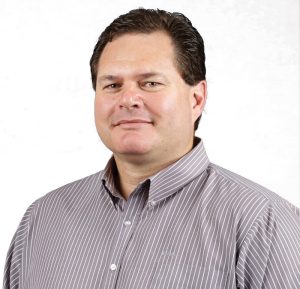
Office of the registrar
The extent of challenges with the regulatory framework and governing of fertilisers, animal feed, pet food and sterilising plants, stock remedies, and plant remedies facing the office of the registrar have been highlighted on numerous occasions. Organised agriculture is particularly concerned as this has been ongoing for more than a decade and has affected the product registration process and compounded backlogs in all segments.
Challenges at the office of the registrar include human resources and technologies that have not kept pace with growth and innovation as well as the outdated legislation and regulatory framework of Act No. 36 that are unable to cater to the new era. The escalation in product registrations in the different market segments is continuously driven by the needs of the modern customer, forcing industry segments to diversify their product ranges, locally and internationally.
The SAIF aims to shape a new regulatory environment in the industries of the founder members. As a united body, it will primarily work alongside the office of the registrar in a PPP with the DALRRD.
However, various segments of the agricultural sector most severely affected by these challenges have already in the past stepped up to assist the office of the registrar in fulfilling its functions. Both the fertiliser and the animal health industry have assisted the DALRRD.
Fertasa members supported the DALRRD with regard to the registration of products for the fertiliser industry by appointing two qualified people in 2016 to assist members and the DALRRD in attending to an appreciable backlog in product registrations. This investment was made as there was a perceived lack of resources in terms of technical advisers. The initial successes in reducing the registration backlog were unfortunately replaced by a steady increase in the backlog even pre-COVID-19.
SAAHA members have also collaborated with the department since 2018 by investing in a public-private-type partnership. External evaluators were sourced to assist in the evaluation of stock remedy submissions. The parties agreed on new guidelines and requirements for registration, thereby successfully eliminating the bulk of the stock remedy backlog.
Why the SAIF?
At the PPP workshop in April, Boshoff shared his experience of this journey to establish a partnership and remarked that in the 16 years he has been with AFMA, they have been trying to foster and improve the relationship so that industry could have a voice. He described the SAIF’s participation and progress up to now with Act No. 36, their official status, terms of reference, the terms of engagement, the regulatory strategy which was developed as well as immediate actions and conclusions.
Boshoff explained that the SAIF was established with the goal of becoming a Section 21 company. The official status of the forum as a legal entity provides the flexibility to be transformed into a non-profit company in future to play different roles, should it ever be needed. Its purpose is to provide a consolidated strategic platform to engage with the registrar and the top management of DALRRD and be the one voice for industry. The forum will foster an improved partnership and enable role-players to work closely with government, especially now that industry has to prepare and align for the bigger Agricultural Master Plan (AMP) workshops and strategies.
He is adamant that this will not ‘just be a piece of paper’, but that all parties governed by Act No. 36, including the department, will adhere to the jointly formulated strategic guidelines. It will be a PPP with government and it must be signed off by government. There must be timeframes and deliverables.
Terms of reference
To obtain official recognition from the department, the SAIF was officially introduced to the registrar and senior management in September 2020 and has now been officially recognised by the DALRRD as the mouthpiece of all industry segments governed by Act No. 36. The terms of reference ensure an improvement of communication with government to strategically reshape the regulatory environment, to be forward thinking and to come up with new ideas. It guarantees the necessary accountability of both industry and government in a PPP, providing coordination and ultimately assisting with the implementation of required actions, enabling government to provide the necessary capacity.
In order to adequately address issues, the SAIF will guarantee that there is expertise at the table as well as the authority to engage with government at the most senior level. The forum will thus comprise mainly the CEOs of the different organisations and their regulatory and technical experts.
Terms of engagement
The establishment of a solid partnership in a PPP is vitally important to the success of the SAIF as government cannot do this alone without industry and industry cannot do it without government. According to Boshoff, trust is crucial – both parties must be equal partners and enablers for members to do their business. The partners also have the responsibility of ensuring a constant stakeholder consultation process that is inclusive and transparent.
New regulatory strategy
Since its establishment, the forum has developed a new regulatory strategy which, according to Boshoff, involves immediate and mid-term actions as well as long-term sustainable actions.
Immediate actions
Top of the agenda under immediate actions was a GAP analysis. Over the last six months the SAIF members have already had three in-depth workshops with the registrar and his personnel during which they explored a GAP analysis of the regulatory framework and regulatory resourcing of the office of the registrar. The final draft GAP analysis was completed by the SAIF advisory panel of experts at the end of November 2021 and communicated to the registrar and DALRRD senior management in December.
Areas of attention that were specifically identified in the GAP analysis are communication and information, the management system, human resource capacity, the registration process, legislation, registration tariffs and training. The immediate actions are to ensure that sufficient resources are assigned by the DALRRD to the registrar or the industries governed by Act No. 36 to provide technical, administrative and inspection services. The backlog of dossiers awaiting processing must urgently be cleared, especially the product registrations, renewals, import licenses and advertisement approvals.
A follow-up engagement was held in February 2022 during which the inputs by the registrar and the senior staff were discussed and the registrar was requested to provide comments on the final GAP analysis. The SAIF and office of the registrar agreed to have all written comments and additions pertaining to the official final draft completed by the end of March this year before the final round of discussions, and before official sign-off by members of the SAIF and the DALRRD. However, by 1 May this had not been realised. The registrar has approved, but SAIF is awaiting a date from the director-general and chief director to sign off on the GAP analysis.
Once the GAP analysis has been signed off, the SAIF and DALRRD will craft an operational plan to address the gaps identified in the GAP analysis. In addition, the forum also wants to identify new avenues that will ensure that product preregistration backlogs do not occur again.
Medium-term actions
After signing off by both industry and government, the medium-term actions will follow. Once it is known where the gaps are, government and industry must be capacitated to address the problems. That will entail a proper operational plan with the necessary timelines and deliverables. The medium-term strategy is to identify and deploy the necessary tools and systems. Processes to streamline the submission, validation and processing of future registration applications, and to ensure that the product preregistration backlogs are eradicated, must be put in place. In the long term, the desire is to create a new, sustainable regulatory environment in partnership with government so that these industries can function optimally.
Long-term actions
The long-term plan is to identify and propose a totally new regulatory environment for agricultural inputs in South Africa. The SAIF foresees that such a program will support new technology introduction, enable agricultural production, promote employment, support the production and export of agricultural produce and contribute to food security in South Africa.
Boshoff is bullish about this journey and what has already been put in place – members signed up, the SAIF was formed, the challenges were identified and categorised, the regulatory strategy was formalised and there have been two engagements with the registrar on the GAP analysis. He said: ‘It was authorised, it’s not a work in progress anymore, it was finished. More action plans will come, but the immediate action was to deliver the GAP analysis. And it was tabled with government; their feedback will be coming shortly, so for the first phase of our journey everything was ticked off and delivered on. We are now going into phase two.’
The SAIF is also in the process of formalising a memorandum of understanding (MOU). Once finalised, the buy-in and approval of all partners and stakeholders will be required for sign-off on the operational plan. A formal contract, which will serve as a PPP agreement, will then be drafted between the SAIF and the DALRRD for signing. It is envisaged that this PPP will have a similar format and status as the South African Poultry Masterplan.
Operational plan
It is anticipated that the operational plan will outline the objectives, outcomes and scope, as well as the capacity needs (both human and technological). Project timelines and deadlines for completion will be provided to continuously track progress. It will also speak to the duties of responsible partners and provide details on the funding to implement the operational plan.
However, funding the SAIF plan could be problematic. Following a two-year-long consultation process and consensus building throughout the sector, the Agriculture and Agro Processing Masterplan (AAMP) was signed on 12 May 2022. Despite being the first multi-stakeholder process to accurately quantify the investment needed in various catalytic interventions to unlock the sector’s potential for inclusive growth, the department’s budget of R17,3 billion for 2022/2023 tabled by the minister on the same day also reflected some of the concerns contained in the AAMP, making it questionable whether the relevant role-players will distil the concepts into actionable plans during the next phase.
SAIF structure
To function as a strategic platform, the SAIF has a formalised structure with an internal framework consisting of three levels. This framework is one of the founding principles – each segment is responsible for its own work.
The lowest level provides for four liaison working groups consisting of representatives from agricultural remedies, farm feeds, fertilisers and stock remedies. These working groups have ad hoc meetings and comprise the SAIF’s advisory panel of experts.
Second level provides for liaison between the SAIF and the AIC (Act No. 36) in quarterly or, if required, ad hoc meetings. Every main industry stream that is represented has its own meetings with the registrar on the particular issues within their segments.
The third level provides for bi-annual high-level negotiations where the SAIF meets with the registrar, senior management of the DALRRD and the minister to address strategic matters of which Act No. 36 is the main item on the agenda.
The overarching goals of the SAIF reflect the outcomes of the National Development Plan (NDP), namely economic growth, job creation and the needed transformation and inclusiveness in the economy. Although the SAIF provides such a critical platform to interact with government at senior level, the forum has indicated that it would like to elevate it up to ministerial level because at that level the presidency can give some trust in this process.
Along a similar vein, Operation Vulindlela also has a focus on service delivery and resources. It is a joint initiative of the presidency and National Treasury and is equally important to the agricultural industry. It aims to accelerate the implementation of structural reforms and support economic recovery. The responsible government departments and entities drive these reforms, while Operation Vulindlela facilitates technical support where needed. It monitors and identifies challenges and blockages in areas that greatly affect the agricultural sector, including electricity, water, transport and digital communications.
Need for engagement
The need for engagement will thus always exist. The burning question is whether the solution can only be provided by a PPP with government. Details of such a partnership between the regulator (government) and the regulated (industry) clearly need to be discussed in great depth. Thought-provoking issues centre around the PPP – whether it is the only vehicle that can work or should it be a combination of certain other vehicles; if a PPP is decided on, which is the most suitable type and, of course, the legal status of a PPP within government. One concern is whether government can deliver on the agreed outputs. Whatever is decided on, making it binding is critical because no private sector individual or company or sector or organisation will be bound into a contract or a partnership if the other partner can just walk away. The relationship must be based on trust and accountability.
In the meantime, the SAIF is participating in the draft legislation that should be finalised for the new Fertilizers, Farm Feeds, Agricultural Remedies and Stock Remedies Act which requires manufacturers to hold a licence to manufacture or sell fertilisers, farm feeds and agricultural or stock remedies. Both the Fertiliser Bill as well as the Farm Feed and Pet Food Bill, which are 95% complete, make provision for any function to be assigned.



